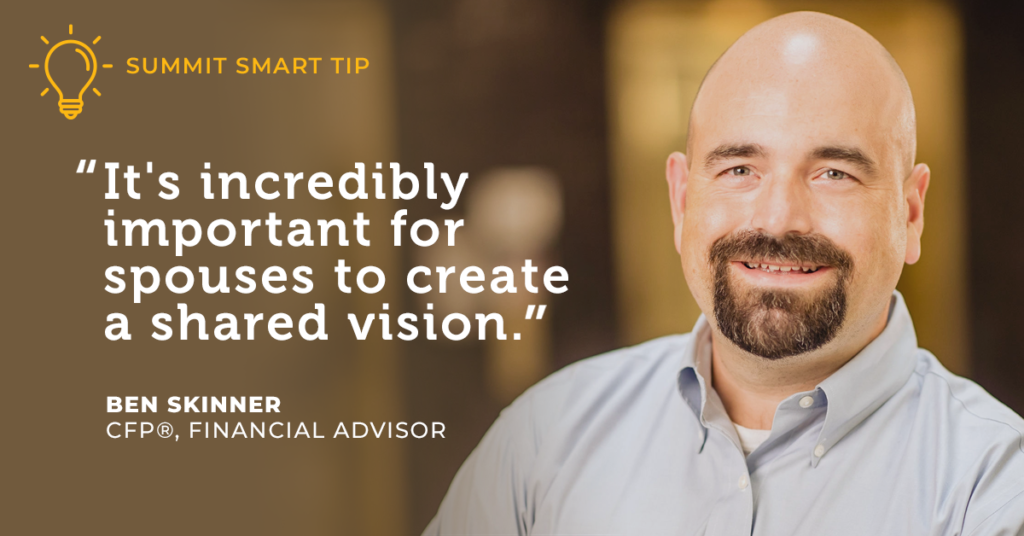Tax Deadline Approaching The 2023 tax season is underway, with the filing deadline approaching on April 15, 2024. […]
We hope you and your families had a restful holiday season. Here are some announcements and a market update to kick off the new year.
Five new team members

Summit Smart Tip

Investment Commentary
2021 was a mixed year for investors in diversified portfolios:
- Domestic equities generally did great (the S&P 500 (large cap), S&P 400 (mid cap) and S&P 600 (small cap) indexes all posted total returns between 25% and 30%). Domestic stock returns were powered by increased earnings, which more than offset a modest reduction in the multiple investors were willing to pay for earnings. The S&P 500 composite earnings rose 34% in 2021 while the price-to-earnings multiple declined nearly 8%. Price-to-earnings multiples remain high in historical terms at 21.1x forward earnings compared to a 25-year average of 16.8%, based on JP Morgan Asset Management data. Historically we have seen an inverse, but not perfect, correlation between future returns and price-to-earnings ratios which grows stronger over time. So, we believe we should plan for returns on domestic stocks to trend more in-line with their historical averages than to continue posting 20%+ annual returns.
- Stocks outside the US had less robust returns with developed markets returning on average less than 12% and emerging markets declining a bit more than 2%. The MSCI ACWI-ex US (measuring the All-Cap World Index excluding US stocks) is priced significantly cheaper than US stock indices from a forward earnings perspective with a forward price-to-earnings ratio of 14.3x. While there may be multiple reasons for non-US stocks to trade at such a discount to US stocks, we believe it is a good reminder that not all asset classes move in sync with each other and provide us with rebalancing opportunities.
- Fixed income returns measured by the US Aggregate Bond Index went backwards by 1.5% as interest rates rose on 10-Year Treasuries from 0.93% at the beginning of the year to 1.52% at year-end. We continue to invest in fixed income funds which have strong liquidity, high credit-quality and, in aggregate, a shorter duration than the US Aggregate Bond Index.
2021 was also a year where we were all reminded of inflation as price levels increased at a pace not felt since the 1980s (though we have had some pockets of high inflation in the 1990s and 2000s, those had not been sustained for long).
Social Security benefits will be adjusted for a 5.9% cost of living adjustment in 2022 – slightly higher than 2008’s 5.8% COLA and the highest on record since 1982. However, markets do not appear to be pricing in rampant long-term inflation as the 5-Year, 5-Year Forward Inflation Expectation Rate (which measures the expected average inflation rate over the 5 year period beginning 5 years from now) is 2.25%. The 5-Year Inflation Breakeven Rate on TIPS (Treasury Inflation Protected Securities) was 2.86% based on year-end data published by the St. Louis Fed, while the 10-Year Inflation Breakeven Rate was 2.56%. Of course, inflation is also felt personally, and substantial increases in basic needs of fuel, food and housing were keenly felt in 2021. However, as investors it is important to note that markets are not expecting hyper-inflation.
As we begin 2022…
We find wisdom in an observation shared by Liz Ann Sonders, Chief Investment Strategist at Charles Schwab, as part of her November commentary:
“The decision to get in or get out of the market is a gamble on moments in time, while investing is a disciplined process over time.”
The Investment Policy Statements customized for our clients continue to focus on the disciplined process over time. We will continue to rebalance portfolios to assure exposure to domestic and international equities as well as fixed income based on the individualized needs and risk tolerances of our clients. As always, your Summit advisor is available to discuss your Investment Policy Statement, investment goals and portfolio management.
Ted Saneholtz retires from Summit
On November 1st, 1995, Ted Saneholtz founded Summit Financial Strategies with twelve clients, one partner, and a dream to bring a client-first financial firm into the industry. Twenty-six years later, Ted is retiring.
If you didn’t catch this video at our Annual Holiday Party, here’s your chance to hear family, friends, mentors, and coworkers share the impact Ted had on their lives and offer words of wisdom for this new chapter.
Read More: